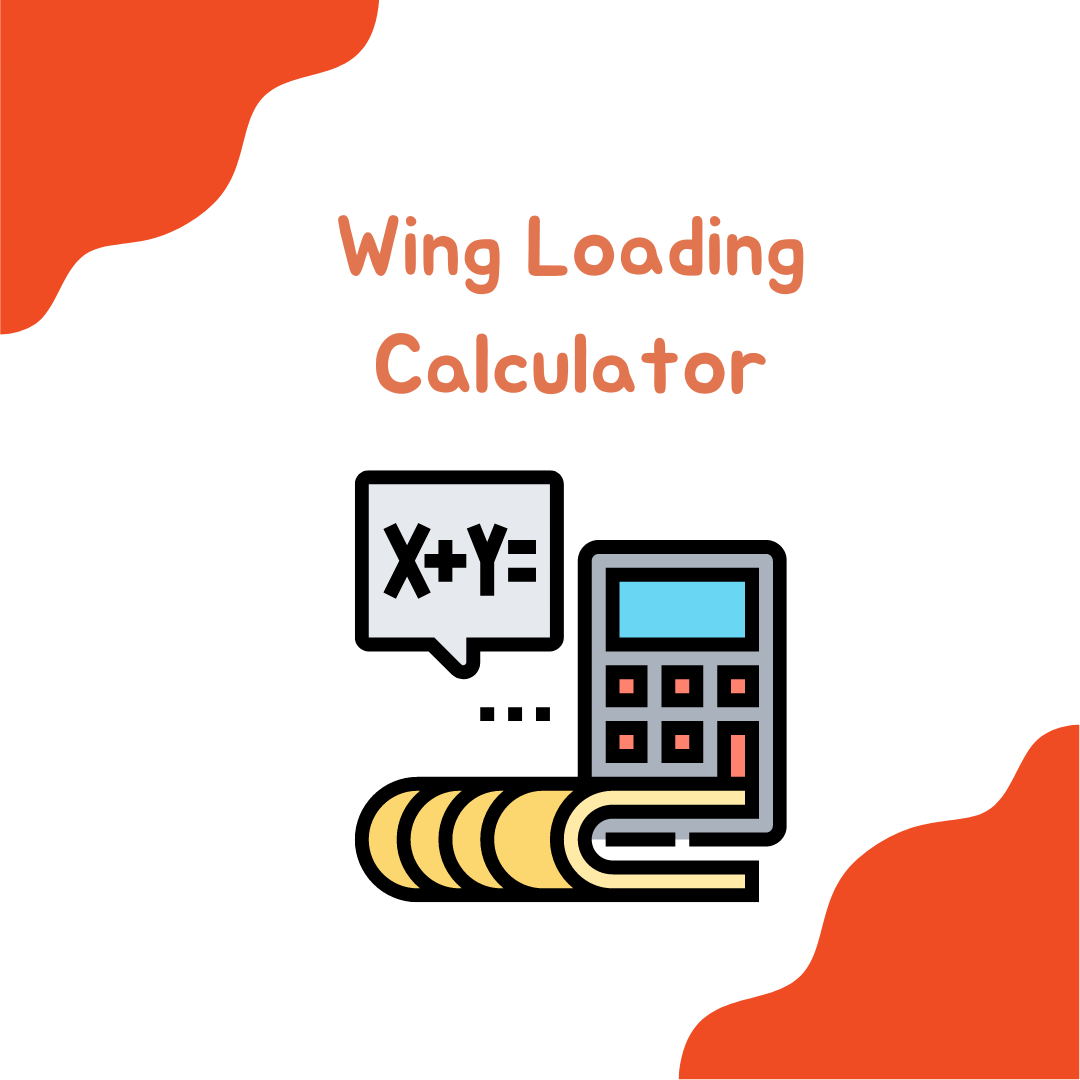Wing Loading Calculator
Wing Loading Calculator: A Crucial Step in Aircraft Design
When it comes to designing aircraft, engineers, and designers are tasked with a multitude of complex decisions. One of the most critical aspects is determining the wing loading of the aircraft. Wing loading is a fundamental parameter that significantly impacts an aircraft’s performance, stability, and overall flying characteristics. We delve into the concept of wing-loading and explore how a wing loading calculator plays a pivotal role in modern aircraft design.
Affiliate Link


Ergonomic Office Chair Home Office Desk Chair with Lumbar Support
The chair I use in my home office. A good balance of budget friendly price and quality. And my 18 month old loves looking in the reflective surface on the back, so there's that.

Understanding Wing Loading:
Wing loading is the measure of how much weight an aircraft’s wings must support per unit of wing area. In other words, it quantifies the aircraft’s weight relative to the size of its wings. This parameter is vital because it directly affects an aircraft’s ability to generate lift and, consequently, its flight performance.
Low wing loading indicates that the aircraft has a large wing area relative to its weight, resulting in lower stall speeds and better maneuverability. On the other hand, high wing loading implies a smaller wing area relative to weight, which can lead to higher stall speeds and reduced maneuverability but potentially higher cruise speeds.
Results
Please calculate the wing loading.
Formula for Calculating Aircraft Wing Loading
Certainly, here’s a simplified formula for calculating wing loading:
Wing Loading (W/S) Formula:
Wing Loading (W/S) = Aircraft Weight (W) / Wing Area (S)
Where:
- Wing Loading (W/S) is the wing loading of the aircraft, measured in pounds per square foot (or Newtons per square meter, depending on the unit system used).
- Aircraft Weight (W) is the aircraft’s total weight, including its structure, fuel, payload, and other components. It’s usually measured in pounds or kilograms.
- Wing Area (S) is the total area of the aircraft’s wings, typically measured in square feet or square meters.
Remember that this is a basic formula and doesn’t account for certain complexities, such as weight distribution across the wings or variations in aerodynamic characteristics. Advanced wing loading calculations may incorporate additional factors to represent an aircraft’s performance accurately.
It’s also important to note that different aviation authorities or design practices might have specific requirements or adjustments for the wing loading formula. Always refer to the guidelines and standards relevant to your particular design context.
Factors Influencing Wing Loading:
Several factors influence wing loading:
1. Aircraft Weight:
Heavier aircraft require larger wings or more advanced aerodynamics to maintain acceptable wing loading.
2. Wing Area:
A larger wing area distributes the aircraft’s weight over a larger surface, resulting in lower wing loading.
3. Design Purpose:
The aircraft’s intended use plays a role; for example, fighter jets designed for agility have lower wing loading compared to commercial airliners focused on efficiency.
4. Flight Altitude and Speed:
Aircraft that operate at higher altitudes and speeds may require different wing loading values to achieve optimal performance.
Importance of Wing Loading Calculation:
The intricate relationship between aircraft weight, wing area, and wing loading demands precise calculations. This is where a wing-loading calculator becomes indispensable. Modern aircraft design heavily relies on computational tools to optimize various parameters, and a calculator is a prime example.
A calculator takes inputs such as aircraft weight, desired wing area, and flight conditions and then provides the corresponding wing loading value. This helps designers ensure that the aircraft’s wing loading aligns with its intended performance characteristics. Whether the goal is to create a nimble sports plane or an efficient commercial airliner, the calculator assists in achieving the desired balance.
Design Iteration and Optimization:
A significant advantage of using a wing-loading calculator is the ability to iterate and optimize designs quickly. Engineers can input different parameters and observe how changes in weight, wing area, or other variables impact wing loading. This iterative process allows for fine-tuning the aircraft’s design to achieve the best possible performance within the defined constraints.
Real-World Applications:
The impact of wing loading becomes evident in various real-world scenarios:
1. General Aviation:
Light aircraft used for personal or training purposes often prioritize low-wing loading to ensure stability and safe handling.
2. Military Aircraft:
Fighter jets require low wing loading to execute rapid maneuvers and maintain control at high angles of attack.
3. Commercial Airliners:
Efficiency and fuel economy drive design choices, necessitating careful consideration of wing loading for optimal cruise performance.
4. Aerospace Innovation:
Modern innovations like electric aircraft and urban air mobility vehicles rely on advanced wing loading calculations to balance energy efficiency and flight capabilities.
Wing Loading is a pivotal parameter in aircraft design
Wing loading is a pivotal parameter in aircraft design, directly influencing flight characteristics and performance. With a calculator, engineers can efficiently determine the optimal wing loading for a given aircraft, ensuring a harmonious balance between weight, wing area, and performance requirements. As technology advances, these calculators will remain indispensable tools for achieving innovation and excellence in aviation design.
